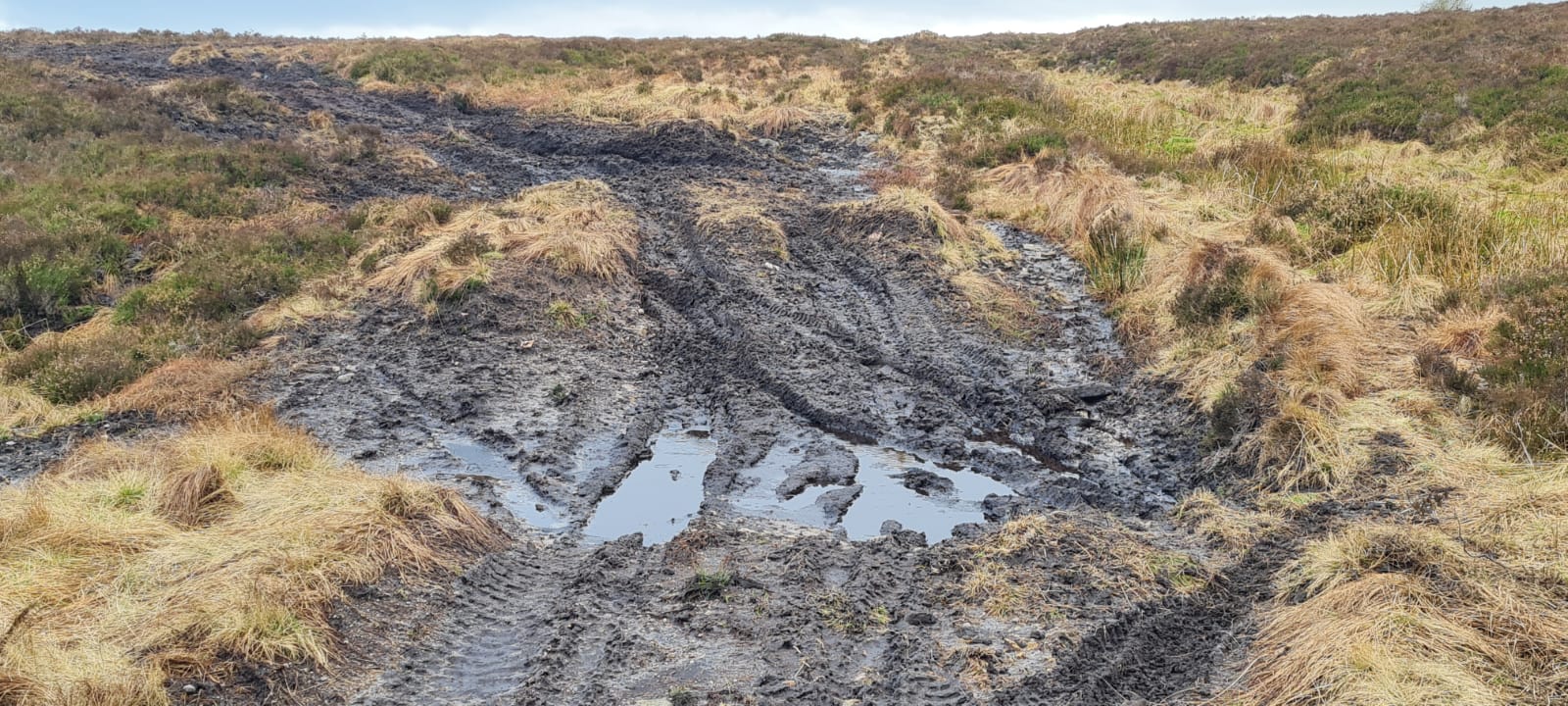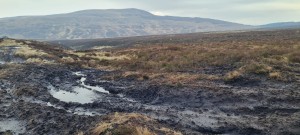
The Muirkirk and North Lowther Uplands Special Protection Area (SPA) covers around 26, 832 hectares of moorland north and south of Muirkirk. It is one of the largest special protection areas in Scotland and internationally important due to the vulnerable birds it supports. It is also designated as a Site of Special Scientific Interest (SSSI). SSSIs are nationally important for their special features – in this case large areas of peat-forming blanket bog, acid grasslands and heather moorland – supporting a myriad of species. Sadly, damage by off-road motorised vehicles such as quad and dirt bikes are putting these precious habitats, and the wildlife they sustain, at risk.
Natural habitats
Bird populations in Scotland have plummeted in recent years with 1 in 4 species now in serious trouble made worse recently by the devastating effects of avian flu. Not only are these motor vehicles causing physical damage, but they have the potential to disturb upland wading birds – such as the red listed, near-threatened Eurasian Curlew and the beautiful, but declining, Golden Plover and internationally important birds of prey such as Merlin, Hen Harrier and Peregrine Falcon. Disturbances during breeding season can cause nests to be abandoned. It is worth noting that all breeding wild birds are protected by law, and it is an offence under the Wildlife and Countryside Act 1981 to disturb them.
John Adair, Area Officer at NatureScot, had this to say:
“At a time when more and more people are aware of nature and of the need to protect habitats which are home to so much of our wildlife, it is very disappointing to see this illegal activity continue. Not only is criminal damage being carried out by breaking down fences and gates, but the individuals involved are putting themselves at great risk of being found guilty of wildlife crime, whether deliberate or non-deliberate. All of the local farmers and owners are trying hard to improve conditions for wildlife on the moors, and to see an increase in their numbers, and so it is quite tragic that the local populations of animals and birds using the moorland are being so negatively affected by these illegal activities.”
Protecting peatland
It’s not just the birds that are at risk. Vast areas of this moorland are covered by blanket bog – which is becoming increasingly important in today’s world due to its ability to create and store carbon in the form of peat. It takes 10 years to form 1cm of peat. Incredibly, some of the peat around these areas is about 8m deep, meaning this peat may have formed around 8000 years ago. Motor vehicles in and around this area damages the soil structure, which in turn can greatly affect the water table. This stops peat forming and eventually damages the peat itself. When this happens, it stops being a carbon sink and instead can begin leaking carbon into the atmosphere.

Off road vehicle damage
Nick Wright, Estate Factor from land managers Stanley Wright said,
“We have started a program of peatland restoration across the Estate. These vehicles damage the land; they create channels for water to flow and erode the soil and peat. There’s also the wildlife, several priority species we work hard to protect, and of course the sheep, pregnant ewes and the new-born lambs in spring to consider. These vehicles cause disturbance and distress to these creatures. It’s sad and frustrating.”
Leave no trace
Tibbies Brig and Cairn Table are sites that hold a special place in the hearts of local people. The Cairn Table memorial was built in 1920 to honour the men and women that gave their lives in the war. Tibbies Brig – named after the local poet – has long been a place popular with walkers. These places – within the Dumfries Estate and the SPA boundary – are as important culturally as they are for their ecology and wildlife. In Scotland we have the ‘Right to Roam’ – now enshrined in law (Land Reform Act, 2003) which allows us all to walk, cycle, canoe, climb over just about all of Scotland’s land and inland waters and visit places such as these. However, with this freedom comes the responsibility to do so with respect to the environment and to other access takers. This right does not extend to accessing land by motorised vehicles without permission. In fact, it is an offence under the 1988 Road Traffic Act (Section 34) to do so.
To ensure we are treating these hills, wildlife and other outdoor recreationalists with respect, we must leave the off-road vehicles at home, or find alternative areas to ride them. (The Scottish Off Road Centre might be a good place to get information: https://www.scotoffroad.co.uk/) Every attempt must be made to leave our natural environment in a better condition for all those who come after us.


